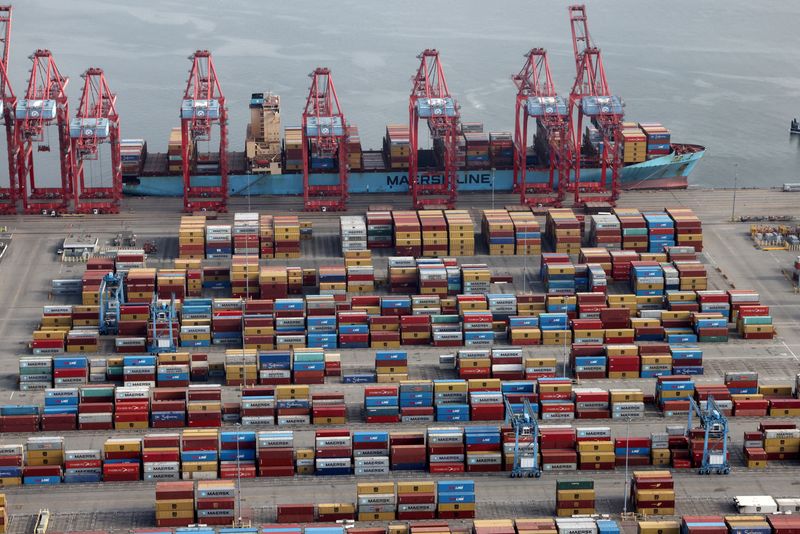WASHINGTON (Reuters) – The U.S. current account deficit narrowed in the fourth quarter amid an improvement in secondary income receipts as well as an increase in the services surplus, data showed on Thursday.
The Commerce Department said the current account deficit, which measures the flow of goods, services and investments into and out of the country, contracted 5.6% to $206.8 billion last quarter.
The current account gap represented 3.2% of gross domestic product, the smallest share since the second quarter of 2020 and down from 3.4% in the third quarter. The deficit peaked at 6.3% of GDP in the fourth quarter of 2005.
For all of 2022, the current account gap widened to a record $943.8 billion, down from $846.4 billion in 2021. It represented 3.7% of GDP, the highest share since 2008, from 3.6% in 2021.
The United States is now a net exporter of crude oil and fuel. Though the deficit remains wide, it has no impact on the dollar given its status as the reserve currency.
Exports of goods fell $31.1 billion to $514.9 billion, weighed down by decreases in petroleum products, natural gas, nonmonetary gold.
Imports of goods also dropped $28.0 billion to $787.2 billion, reflecting decreases in industrial supplies and materials, mainly petroleum products, and in consumer goods such as cell phones, apparel, footwear and household goods.
Imports have slowed as businesses assess their inventory needs amid cooling domestic demand against the backdrop of the Federal Reserve’s aggressive interest rate increases. A smaller trade deficit has helped to boost economic growth for three straight quarters.
Exports of services increased $6.1 billion to $242.8 billion, boosted by increases in personal travel, financial intermediation services, credit card and other credit-related services, as well as air passenger transport.
Imports of services increased $1.1 billion to $175.5 billion, reflecting a rise in personal travel that was partly offset by a decrease in sea freight transport.
Secondary income receipts increased $8.3 billion to $51.3 billion, lifted by a rise in general government transfers, mainly fines and penalties. Payments of secondary income fell $4.5 billion to $92.4 billion, pulled down by a decline in general government transfers, mostly international cooperation.
(Reporting by Lucia Mutikani; Editing by Paul Simao)
